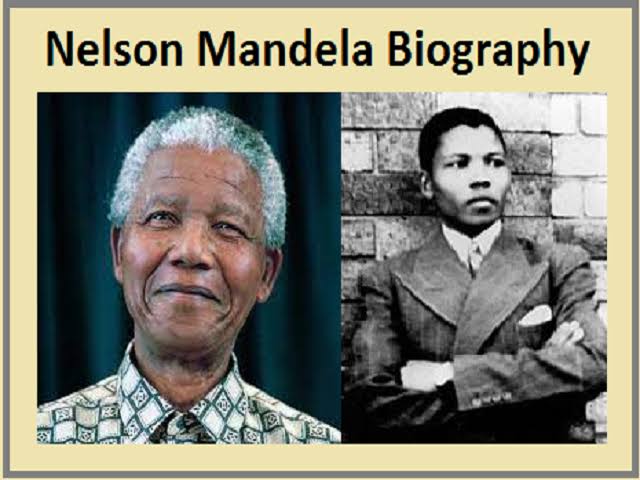Nelson Mandela Biography Project Class 10
Nelson Mandela, an iconic figure in the fight against apartheid and a symbol of resistance and forgiveness, is widely regarded as one of the most influential leaders of the 20th century. Born on July 18, 1918, in Mvezo, a village in South Africa, Mandela dedicated his life to fighting for justice, equality, and human rights. His remarkable journey from prisoner to president continues to inspire millions of people around the world. In this article, we will delve into the life and legacy of Nelson Mandela, focusing on his early years, political activism, imprisonment, and his enduring impact on South Africa and the world.
Early Life and Education
Nelson Rolihlahla Mandela was born into the royal family of the Thembu tribe, and his given name, Rolihlahla, means “pulling the branch of a tree” or, more colloquially, “troublemaker.” Mandela’s father, Gadla Henry Mphakanyiswa, was the chief of Mvezo, and his mother, Nosekeni Fanny, was the third of his four wives. Tragically, Mandela was only nine years old when his father passed away.
Despite the challenges he faced growing up in a rural village, Mandela was a diligent student. He attended a local Methodist school and later enrolled at the Fort Hare University, becoming the first person in his family to attend college. However, due to his involvement in student protests against the university’s policies, Mandela was expelled.
Political Activism and the African National Congress (ANC)
Mandela’s expulsion from college marked the beginning of his journey into politics and activism. In the 1940s, he joined the African National Congress (ANC), a political organization that aimed to end apartheid, the oppressive system of racial segregation enforced by the South African government. Mandela rose through the ranks of the ANC, advocating nonviolent resistance against apartheid.
As apartheid policies grew increasingly brutal and oppressive, Mandela’s activism took a more radical turn. In the 1960s, he co-founded the military wing of the ANC, known as Umkhonto we Sizwe (MK), which launched a campaign of sabotage against government institutions. Mandela became a target of the apartheid regime and went into hiding, adopting various disguises to evade arrest.
Imprisonment and Robben Island
In 1962, Mandela was captured by the authorities and charged with sabotage and conspiracy to overthrow the government. He was sentenced to life imprisonment and sent to the notorious Robben Island prison. Mandela spent 27 years behind bars, enduring harsh conditions and intense isolation.
Despite the hardships he faced, Mandela remained steadfast in his commitment to the struggle against apartheid. He became a symbol of resistance, inspiring both his fellow prisoners and the outside world. Mandela’s imprisonment attracted international attention and put pressure on the apartheid government to release him.
The Road to Freedom and Presidency
In 1990, after decades of international pressure and internal protests, President F.W. de Klerk finally announced Mandela’s release from prison. Mandela emerged as a transformed leader, advocating reconciliation and forgiveness rather than revenge. He played a crucial role in negotiating the end of apartheid and the establishment of a democratic South Africa.
In 1994, South Africa held its first democratic elections, and Nelson Mandela was elected as the country’s first black president. His presidency marked a new era of hope and healing for South Africa, as he worked tirelessly to promote unity and dismantle the remnants of apartheid. Mandela’s commitment to reconciliation and nation-building earned him global admiration and respect.
Legacy and Impact
Nelson Mandela’s legacy extends far beyond his presidency. His extraordinary leadership, courage, and resilience continue to inspire individuals and movements worldwide.
Mandela’s unwavering commitment to justice, equality, and human rights has left an indelible mark on the world.
Mandela’s emphasis on forgiveness and reconciliation helped South Africa navigate its difficult transition from apartheid to democracy. The Truth and Reconciliation Commission, established during his presidency, aimed to heal the wounds of the past by allowing victims and perpetrators to share their stories and seek forgiveness.
Furthermore, Mandela’s influence extended beyond South Africa. He championed causes such as education, HIV/AIDS awareness, and the fight against poverty. The Nelson Mandela Foundation, established by Mandela himself, continues to promote his values and works towards a more equitable society.
Conclusion
Nelson Mandela’s biography is a testament to the power of resilience, forgiveness, and unwavering commitment to justice. From his early years in a rural village to his rise as a global icon, Mandela’s journey serves as a source of inspiration for generations to come. His leadership and dedication to the fight against apartheid changed the course of South African history and continue to shape the world we live in today. Nelson Mandela’s legacy serves as a reminder that individuals have the power to make a profound and lasting impact on society, regardless of the obstacles they face.
